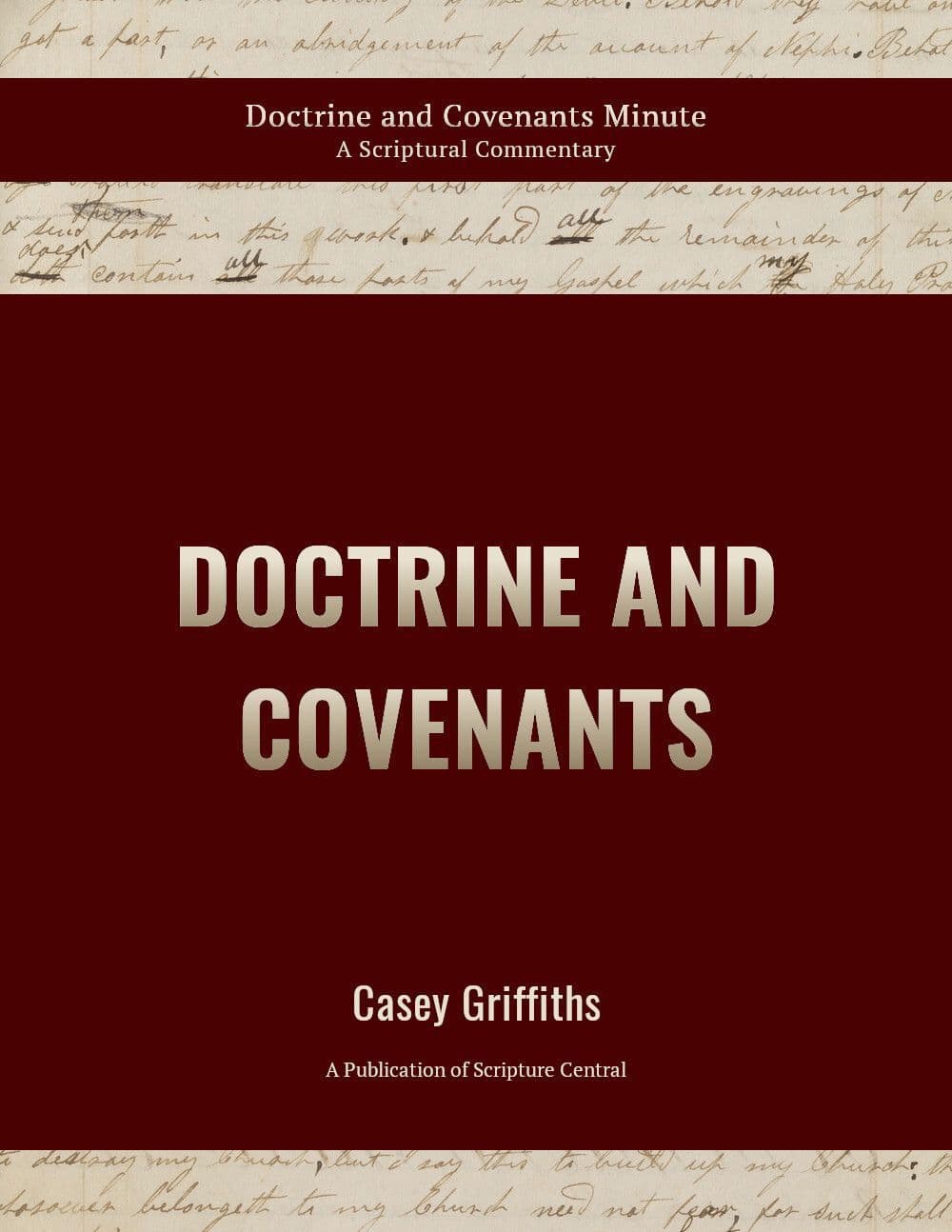Book
144 Chapters

After the November 1–2, 1831, conference to publish the revelations was completed, this revelation assigned John Whitmer to travel to Missouri with Oliver Cowdery, who was earlier commanded to arrange for the printing of the revelations (D&C 68:32). William W. Phelps was already setting up a printing office in Independence, Missouri, and Church leaders planned to print and produce the first bound copies of Joseph Smith’s revelations there. Whitmer was assigned to travel with Oliver Cowdery as part of his assignment as Church Historian (D&C 47).
Whitmer later recorded in his own history, “About this time it was in contemplation for Oliver Cowdery to go to Zion and carry with him the Revelation and Commandments, and I also received a revelation to go with him. We left Ohio, on the 20th of Nov, 1831 and arrived in Zion, Mo. Jan. 5, 1832. When we arrived in Zion we found the saints in as good situation as we could reasonably expect.”1 In the following months, work continued in Missouri on the publication of the revelations. At the same time, storm clouds were gathering over the Saints in Missouri, and the shadow of mob violence was growing. John Whitmer noted in his history that a few weeks after his arrival in Independence, “the enemies held a counsel in Independence, Jackson County, Mo., how they might destroy the saints but did not succeed at this time.”2
See “Historical Introduction,” Revelation, 11 November 1831–A [D&C 69]
1 Hearken unto me, saith the Lord your God, for my servant Oliver Cowdery’s sake. It is not wisdom in me that he should be entrusted with the commandments and the moneys which he shall carry unto the land of Zion, except one go with him who will be true and faithful.
2 Wherefore, I, the Lord, will that my servant, John Whitmer, should go with my servant Oliver Cowdery;
3 And also that he shall continue in writing and making a history of all the important things which he shall observe and know concerning my church;
4 And also that he receive counsel and assistance from my servant Oliver Cowdery and others.
5 And also, my servants who are abroad in the earth should send forth the accounts of their stewardships to the land of Zion;
John Whitmer, one of the eight witnesses of the Book of Mormon, had been called by revelation as Church Historian a few months earlier (D&C 47). While John initially doubted his ability to fill the role, he made an invaluable contribution to the history of the Church. John began writing a history at this time, but his most esteemed contributions came in the collection of documents he prepared. Beginning with his call in March, 1831, the documentary record of the Church, including minutes, letters, and other items, grew in size and in depth. Most of the revelations being transported to Missouri had been recorded in John Whitmer’s handwriting, and nearly all of the earliest copies of the revelations come from copies John made.
The Lord makes an important addition here to the historical work of the Church by adding that, in addition to the work of the Church Historian, the “servants who are abroad in the earth” should also send accounts of their stewardships (D&C 69:5). The historical enterprise of the Church includes everyone who participates in this great work. The history of a small organization, branch, or ward might seem insignificant in the grand scheme of things, but each history is a valuable part of the larger story of the Restoration.
6 For the land of Zion shall be a seat and a place to receive and do all these things.
7 Nevertheless, let my servant John Whitmer travel many times from place to place, and from church to church, that he may the more easily obtain knowledge—
8 Preaching and expounding, writing, copying, selecting, and obtaining all things which shall be for the good of the church, and for the rising generations that shall grow up on the land of Zion, to possess it from generation to generation, forever and ever. Amen.
The Lord here affirms once again that the land of Zion will eventually become the geographical center of the Church. This thread is carefully woven throughout the Doctrine and Covenants. In commanding that the revelations be printed in Missouri, the Lord is emphasizing the importance of Zion and its development for the work of the Church in the latter days.
Although the Lord accepts Zion as the center place, He also commands John Whitmer to travel from “place to place, and from church to church” to record and preserve the history of the Church (D&C 69:7). The history of the Church must not include only the stories of those who are at its headquarters. The Saints who live in smaller units and more scattered places need to have their experiences and stories told as well. In John Whitmer’s day, this included the different branches of the Church. In our day, it is important to remember that the story of the Church has not only unfolded in Fayette, Kirtland, and Nauvoo, but is still unfolding around the world. The history of the Church in places like Dubai, United Arab Emirates; Shanghai, China; Tarawa, Kiribati; and Bengaluru, India, are just as important to our story as the experiences of these early Saints. Figuratively speaking, it is always 1830 in the Church somewhere, and future histories must include these new stories of the spread of the gospel.
Book
144 Chapters
Items in the BMC Archive are made publicly available for non-commercial, private use. Inclusion within the BMC Archive does not imply endorsement. Items do not represent the official views of The Church of Jesus Christ of Latter-day Saints or of Book of Mormon Central.